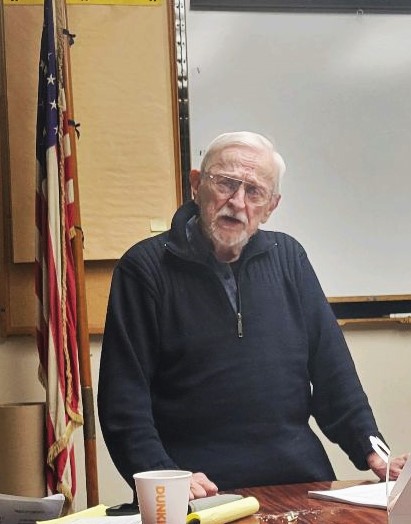Discovering the Atmosphere Through Radio Waves: A Glimpse into Gene Niemiec’s Seminar
Lecture Notes || Presentation Video
 In the inaugural session of our new Seminar Series, Gene Niemiec from KJI Electronics took the stage, captivating the audience with a 45-minute deep dive into the world of “Atmospherics”. This monthly initiative aims to shed light on the diverse expertise within our community, and Gene’s lecture did just that, blending history, science, and technology into an enlightening experience.
In the inaugural session of our new Seminar Series, Gene Niemiec from KJI Electronics took the stage, captivating the audience with a 45-minute deep dive into the world of “Atmospherics”. This monthly initiative aims to shed light on the diverse expertise within our community, and Gene’s lecture did just that, blending history, science, and technology into an enlightening experience.
Journey Through Radio Discovery
Gene’s lecture commenced with a historical overview of radio discovery, tracing back to the pioneering days when the airwaves first whispered their secrets to humanity. He recounted the milestones that led to our contemporary understanding of radio technology, paying homage to the legends like Heinrich Hertz and James Clerk Maxwell, whose foundational work paved the way for modern telecommunications.
Unraveling the Technical Tapestry
Diving into the technical heart of the subject, Gene explained the fundamental equations that govern radio waves. He elucidated on Hertz’s principles, Maxwell’s equations, and the inverse square law, making a complex topic accessible. The discussion on free space path loss equations further illuminated the challenges and intricacies of radio wave propagation, setting the stage for a deeper exploration into the phenomenon.
Exploring Propagation Modes
The seminar then shifted gears towards the various propagation modes that enable radio waves to traverse vast distances. Gene’s detailed explanation covered ground wave propagation, which follows the Earth’s curvature, and sky wave propagation, which involves the ionosphere reflecting radio waves back to Earth. He also touched on conduction through earth and sea, offering insights into the less common paths that radio waves can travel.
Ionospheric Interactions and Beyond
Gene’s expertise shone brightly as he delved into the complexities of the ionosphere, particularly its D, E, and F layers, and their roles in radio wave propagation. Concepts like skip, moon-bounce, refraction, and Snell’s law were demystified, painting a picture of the invisible dance between radio waves and atmospheric layers. The phenomena of knife-edge diffraction and ducting, along with thermal inversions, were expertly explained, highlighting the impact of environmental conditions on radio communications.
The World of Radio Polarization and Propagation Anomalies
The seminar also explored the fascinating aspects of polarization in radio waves, discussing vertical, horizontal, and circular polarizations and their applications. Gene’s talk on Faraday rotation, sporadic E layers, and the enigmatic 6 meters band revealed the unpredictable nature of radio propagation, while discussions on gray line and trans-equatorial propagation showcased the global scale of radio communication.
Celestial Influences and Ionospheric Dynamics
A captivating segment on meteor showers, the solar cycle (specifically Cycle 25), and the sun’s influence on the ionosphere offered a cosmic perspective on radio wave propagation. Gene elaborated on how solar activities affect the heating and cooling of the ionosphere, impacting the Maximum Usable Frequency (MUF) and, consequently, radio communications across the globe.
Conclusion
The seminar concluded with a robust Q&A session, where attendees delved further into the intricacies of atmospherics. Gene’s comprehensive lecture not only enlightened but also inspired, reminding us of the invisible yet powerful forces that connect our world through radio waves. As the first of our Seminar Series, this event set a high bar, promising a future of engaging and educational sessions from the diverse talents within our community.